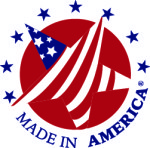A Manufacturing Supercycle Has Begun by Rosemary Coates
The term “manufacturing supercycle” was recently introduced by Joseph Quinlan, an economist at Merrill and Bank of America. It appears that a significant amount of investment in the private sector is complementing the major investment now being made by the U.S. government.
At the Reshoring Institute, we’ve been reporting on robust growth across all manufacturing sectors in America, particularly since the pandemic ended. The pandemic was a real eye-opener for manufacturers and the risks of long global supply chains. Companies struggled to cope with the open-closed-open-closed cycle of factories in China, delayed shipments, and canceled orders. As a result, many companies started rethinking their worldwide manufacturing locations, including considering bringing manufacturing back to America. What we are seeing is slow, steady growth in the reshoring of manufacturing and sourcing.
So why are analysts suggesting we are entering a manufacturing supercycle? These analysts and economists are reacting to where investment dollars are going, and now the money is going to U.S. manufacturers, after nearly 30 years of underinvestment. The U.S. government’s investment dollars are coming from the three enormous funding bills passed by Congress in the past two years. The Inflation Reduction Act, the Chips and Sciences Act, and the Infrastructure Act are pumping billions of dollars into new projects in America.
The three funding bills
Under the Inflation Reduction Act, funding for green-energy projects such as solar farms, wind energy, and battery-powered vehicles is available and beginning to have a magnifier effect on domestic production and jobs. The Chips and Sciences Act has funding for the building of new semiconductor factories starting in Arizona, Idaho, New Mexico, Texas, Ohio, and New York so far. But this Chips Act also funds semiconductor design companies and raw materials suppliers, as well as packaging and finishing companies – the entire semiconductor supply chain.
The Infrastructure Act is essential funding to repair our roads, bridges, rail tracks, airports, and seaports – all essential to support manufacturing in America. It also earmarks funds to develop EV charging stations across America, supporting more EV cars and trucks and reducing auto emissions that contribute to greenhouse gasses.
These three pieces of legislation are fueling a supercycle of manufacturing in America.
Commercial Industrial Real Estate
Yet another indicator is the significant rise in industrial real estate – properties that are used for manufacturing, warehousing, truck terminals, and other industrial uses. Colliers, a major property company reports that their industrial business has doubled this year. Other reports show that the industrial market may be up as much as 30%.
.
What does a manufacturing supercycle mean for supply chain professionals?
The expected growth in American manufacturing over the next few years will shift our focus away from global sourcing and manufacturing, to developing domestic sources with fast turnaround times to serve domestic production. More emphasis will have to be placed on logistics and warehousing and redeveloping the supply base that had previously moved to Asia.
Some of the changes I expect to see include:
- Scramble for commercial real estate to build new manufacturing sites
- Continuing truck driver shortages affecting freight capacity and timely deliveries
- Faster turnaround times demanded of suppliers and manufacturers
- Higher prices as compared with China, on materials and parts
- Need to redevelop suppliers that had closed businesses or moved to China over the past 20 years
- Nearshoring to Mexico, particularly in the automotive and electronics sectors
- A robust economy fueled by new investment over the next few years
Buckle your seat belts, a manufacturing supercycle is coming.
About the Author
Rosemary Coates is the Executive Director of the Reshoring Institute and the President of Blue Silk Consulting, a Global Supply Chain consulting firm. She is a best-selling author of 42 Rules for Sourcing and Manufacturing in China and Legal Blacksmith – How to Avoid and Defend Supply Chain Disputes Ms. Coates lives in Silicon Valley and has worked with over 80 clients worldwide. She is also an Expert Witness for legal cases involving global supply chain matters. She is passionate about Reshoring.




